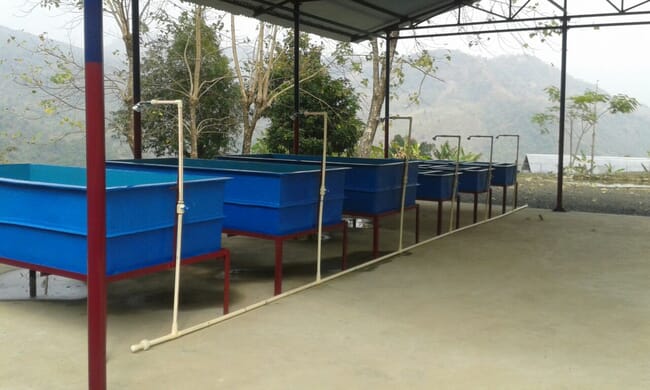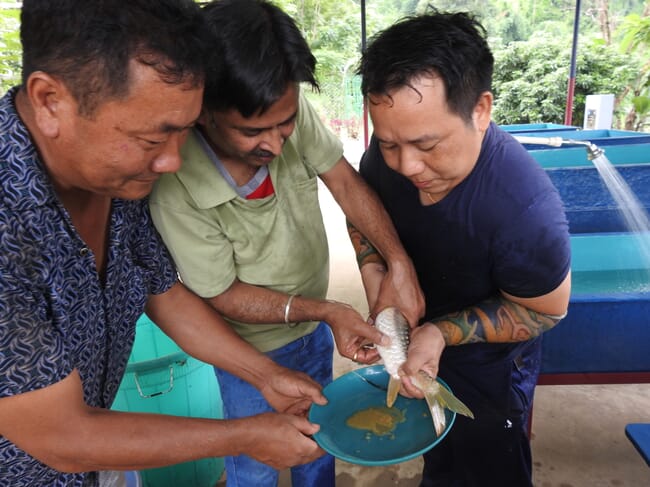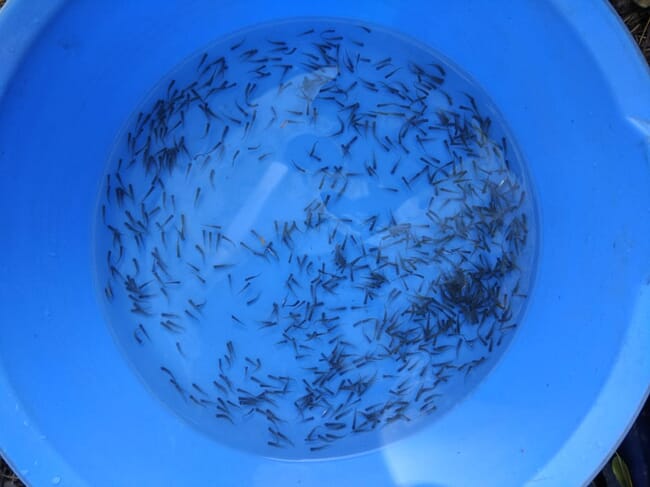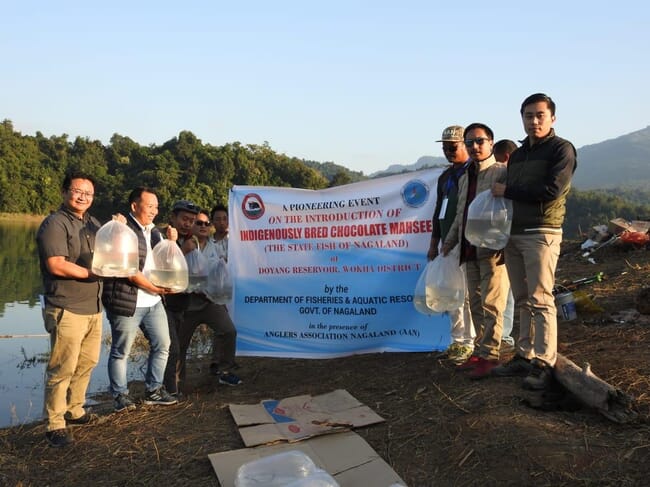
© Phukato Sumi
“The situation was so bad that chocolate mahseer had almost disappeared from all the major rivers of Nagaland. The high-valued food fish was overexploited by the locals for consumption and also for sale. Even brutal techniques like dynamite blasting and poisoning were practised to catch the fish. We were at the risk of losing it,” says Neitho Kuotsu, joint director of the Department of Fisheries and Aquatic Resources, drawing a long breath.
True to Kuotsu’s words, chocolate mahseer (Neolissochilus hexagonolepis) were fast disappearing from the rivers of Nagaland over a decade ago. It was even listed on IUCN’s red list as a nearly threatened species, despite once being plentiful in almost all the rivers of the mountainous state, including the Doyang, Tizu, Dikhu, Milak, Zunki and Lanyi.
Unable to control the rampant killing, the National Bureau of Fish Genetic Resources (NBFGR) in Lucknow suggested elevating its profile and aiding its conservation by making it the state fish in December 2007.
Despite this initiative the numbers continued to downslide. In 2017, ICAR-Directorate of Cold Water Fisheries Research Institute (ICAR-DCFR), Uttarakhand intervened and offered technical and financial support to the state fisheries department for setting-up a hatchery and a broodstock unit in Mokokchung district, around 150 kilometres from Kohima, the state capital.

© Imtisunep
“We began the rehabilitation of the fish and spent around Rs 10 lakh ($13,000) in setting up a hatchery after it was put on the IUCN red list. The fingerlings are collected from the water bodies and then developed into broodstock over 3-4 years. They are then induced to reproduce artificially. The juveniles are grown to fingerling size before being released in rivers and lakes,” says RS Haldar, chief technical officer, ICAR-DCFR who has played a major role in setting up of the hatchery.
As part of the efforts, around 4,000 fingerlings were released for the first time into the Doyang reservoir in Wokha district on 5 December 2019. However, since then the fisheries department has not released any fingerlings due to the pandemic.
“The fish is still endangered because people throw bleach powder (calcium hypochlorite) in the water, which is toxic and kills both the small and the big fish. Moreover, dynamite is easily available here due to its extensive use in road construction, and is also used to stun fish,” adds Haldar.
Captive breeding
The hatchery is spread across 2.5 hectares and has the capacity to produce 50,000 fingerlings a year, which are then released into rivers. However, as Imtisunep, the district fishery officer (DFO) in Mokukchung district, explains, there are a number of challenges relating to breeding the fish.

© RS Haldar
“We face issues, such as assessing the maturity of the fish. They also have a very slow growth rate, taking around two years to reach 1 kg,” he says.
“We feed them with artificial feeds, and also goats’ livers in the early stages. We have also installed a lighting system in the hatchery that attracts the insects which are eaten by the fish.
“We have a very good water supply and the fish don’t suffer from any diseases – the mortality rate is less than 10 percent as the water is kept clean and sediments are allowed to settle down,” he adds.
“Chocolate mahseer can grow up to 25-30 kg, and in the hatchery the weight of the broodstock is around 15 kg for males and 10-12 kg for females. We see a very good market for the fish both for recreational sports and consumption. There’s huge demand for the fish in the state for its delicious taste but we need to pay proper attention in its conservation,” he argues.

© Imtisunep
Angling interests
A major contribution in conserving the state fish has been also played by the Anglers Association Nagaland (AAN), which was founded in 2013. The association has tried to create awareness among the locals about the importance of conserving the fish.
“The recreational sport attracts anglers from as far as the USA, Japan and the UK. Chocolate and golden mahseer are among the most popular fish among anglers because of the thrill involved in catching the fish, which are immediately released into the water afterwards. We began to create awareness among villagers about the sport and told them that its conservation would encourage more foreign nationals and bring revenues for them,” says Phukato Sumi, president of AAN.
“We even asked them to build tourist lodges and food joints near to the points where fishing competitions were being held across the state. The situation has begun to change slowly, as locals feel that conservation of fish is necessary for their livelihoods. We have organised over 30-40 competitions since our inception. People are now trying to save the fish, as its killing affects their livelihood.”

His claims are corroborated by the senior officials of the fisheries department,
“There is no ban in catching the fish but its sale is strictly prohibited. Earlier, we used to see people selling the fish in the market but nowadays this has stopped. We have no official count regarding the total number of chocolate mahseer but such activities clearly indicate that the conservation measures are achieving results,” says Kuotsu.
“The state’s geography and climate make it difficult to undertake take the pre-planned survey work on the rivers, which are mostly situated in steep gorges. Nearly 100,000 farmers are involved in fish farming [largely of Indian major carp species] in the state.”

© Imtisunep
A wider perspective on Nagaland
Chocolate mahseer are not the only endangered fish in the state. According to government records, among the 149 fish species of Nagaland as many as 103 (69.13 percent) are classified as threatened. Around 29 fish species are identified as highly endangered, 44 as vulnerable and 30 are on the threshold of nearly threatened.
Doyang reservoir, the biggest reservoir in Nagaland, has a total water area of 2,258 hectares and its one of the major fishery assets of the state. At present, ponds and tanks are the main resources of fish production in the state, with a a total area of about 10,553 hectares.



